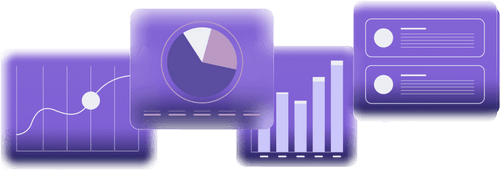
In the ever-evolving world of digital marketing, ethical and transparent SEO content has become more critical than ever. As search engines like Google continue to refine their algorithms to prioritize quality, relevance, and user experience, businesses must adapt by focusing on strategies that build trust with both users and search engines.
This article will guide you through the essentials of creating ethical, transparent SEO content that not only improves your search engine rankings but also fosters long-term relationships with your audience. Whether you’re a small business owner or a seasoned marketer, these insights will help you navigate the complexities of modern SEO while maintaining integrity.
What Is Ethical, Transparent SEO Content and Why It Matters
Ethical, transparent SEO content is content that is created with honesty, clarity, and a focus on delivering value to the reader. It avoids deceptive tactics such as keyword stuffing, cloaking, or misleading meta descriptions. Instead, it prioritizes user intent, high-quality information, and compliance with search engine guidelines.
Why does this matter? Because search engines are increasingly rewarding websites that provide genuine, helpful content. Google’s algorithm now places a strong emphasis on E-E-A-T (Experience, Expertise, Authoritativeness, Trustworthiness), which means that content that lacks transparency or ethical considerations can be penalized.
Moreover, in an age where users are more discerning and skeptical, building trust is essential. Ethical content helps establish credibility, encourages repeat visits, and enhances brand loyalty—all of which contribute to better engagement metrics and higher search rankings.
How Ethical, Transparent SEO Content Impacts SEO Performance
The impact of ethical, transparent SEO content on your website’s performance is significant. Here’s how:
- Improved User Engagement: When users find content that is relevant, well-structured, and genuinely helpful, they are more likely to stay on your site longer, reducing bounce rates and increasing dwell time—both of which are positive signals for search engines.
- Higher Conversion Rates: Trustworthy content builds confidence in your brand, making users more likely to take desired actions, whether that’s signing up for a newsletter, making a purchase, or contacting your business.
- Better Backlink Authority: Websites that consistently produce ethical, high-quality content are more likely to earn backlinks from other reputable sites, which is a key ranking factor.
- Long-Term Visibility: Unlike short-term “black hat” tactics, ethical SEO strategies lead to sustainable growth. This means your content continues to perform well over time, even as search algorithms evolve.
By aligning your content strategy with ethical principles, you’re not just optimizing for search engines—you’re building a foundation for long-term success.
Step-by-Step Implementation Framework
Creating ethical, transparent SEO content requires a structured approach. Follow this step-by-step framework to ensure your content meets both user and search engine expectations.
1. Define or Audit the Current Situation
Start by evaluating your existing content. Are you using clear, honest language? Is your content aligned with user intent? Identify areas where improvements can be made, such as outdated information, unclear calls to action, or overly optimized text.
Action Steps:
– Conduct a content audit using tools like Screaming Frog or Ahrefs.
– Analyze user behavior data from Google Analytics and Search Console.
– Identify gaps in content quality or transparency.
2. Apply Tools, Methods, or Tactics
Once you understand your current state, implement ethical SEO practices. Use tools that support transparency and quality:
- Keyword Research: Use tools like SEMrush or Ahrefs to identify relevant keywords that match user intent.
- Content Creation: Focus on writing for humans first, ensuring your content is informative, engaging, and free of manipulative tactics.
- Meta Tags: Craft clear, concise, and accurate meta titles and descriptions that reflect the content of each page.
Action Steps:
– Incorporate natural language and avoid keyword stuffing.
– Ensure all content is original and free from plagiarism.
– Use tools like Grammarly or Hemingway Editor to improve readability.
3. Measure, Analyze, and Optimize
After publishing your content, track its performance and make adjustments as needed. Use analytics to monitor traffic, engagement, and conversion rates. Look for patterns and continuously refine your approach.
Action Steps:
– Monitor key metrics like bounce rate, average session duration, and conversion rate.
– Use A/B testing to compare different versions of your content.
– Regularly update and repurpose content to keep it fresh and relevant.
Real or Hypothetical Case Study
Let’s look at a hypothetical example of a small e-commerce business that implemented ethical, transparent SEO content strategies.
Scenario:
A boutique clothing store wanted to increase its online sales. Previously, they used aggressive keyword stuffing and misleading product descriptions, which led to poor user engagement and low conversion rates.
Implementation:
They restructured their content strategy, focusing on:
– Writing clear, honest product descriptions.
– Creating blog posts that addressed customer concerns and provided value.
– Optimizing meta tags and headers for better visibility.
Results:
Within six months, the store saw a 40% increase in organic traffic, a 25% improvement in user engagement, and a 30% rise in conversions. Their reputation improved, and they began receiving more positive reviews and backlinks from other fashion blogs.
This case study demonstrates the power of ethical, transparent content in driving real, measurable results.
Tools and Techniques for Ethical SEO Content
To support your ethical SEO content creation, consider using the following tools:
- SurferSEO – Helps with keyword clustering and semantic scoring to ensure content is both relevant and optimized.
- Grammarly – Improves writing quality and ensures clarity and professionalism.
- Google Analytics – Tracks user behavior and helps measure the effectiveness of your content.
- Ahrefs – Provides in-depth keyword research and competitor analysis.
- Screaming Frog – Audits your website for technical SEO issues and content quality.
These tools can help you maintain transparency, optimize for search engines, and deliver value to your audience.
Future Trends and AI Implications
As AI continues to shape the future of SEO, ethical and transparent content will become even more important. Search engines are becoming more adept at detecting manipulative tactics, and AI-driven systems are increasingly focused on understanding user intent and content quality.
Future trends to watch include:
– Voice Search Optimization: As voice searches grow, content must be conversational and answer questions naturally.
– Multimodal Search: The integration of text, images, and video in search results will require content that is diverse and accessible.
– AI Content Detection: Search engines are developing tools to detect AI-generated content, emphasizing the need for human-like, authentic writing.
To stay ahead, focus on creating content that is not only SEO-friendly but also meaningful and valuable to users.
Key Takeaways
- Write for Humans First: Prioritize clarity, relevance, and value over keyword optimization.
- Be Transparent: Avoid deceptive tactics and ensure all content is honest and accurate.
- Focus on Quality: High-quality, original content drives engagement and builds trust.
- Optimize for User Intent: Align your content with what users are searching for.
- Measure and Improve: Continuously analyze your content’s performance and refine your approach.
By adopting ethical, transparent SEO practices, you’re not only improving your search engine rankings but also building a stronger, more trustworthy relationship with your audience.
Meta Title: How to Write Ethical, Transparent SEO Content That Builds Trust and Drives Traffic
Meta Description: Learn how to create SEO content that is ethical, transparent, and trusted by both users and search engines. Boost your rankings and drive real traffic today.
SEO Tags (5): ethical seo, transparent content, user trust, SEO best practices, quality content
Internal Link Suggestions:
– [Parameter #5]: White Hat vs Black Hat SEO
– [Parameter #8]: Content Quality and SEO Success
– [Parameter #12]: Mobile Optimization and SEO
External Source Suggestions:
– https://www.moz.com/blog/ethical-seo
– https://searchengineland.com/what-is-ethical-seo-296274
– https://www.searchenginejournal.com/ethical-seo-practices/379492/








